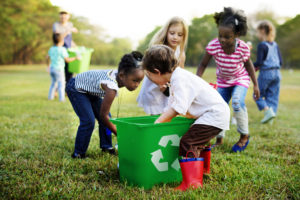
Blog
How Millennials Will Kill the American Recycling System
Browse the Internet for a few minutes and you’ll likely run across a headline blasting Millennials for “killing” a long-accepted practice. As a Millennial myself, my generation has been blamed for the demise of the housing market, nine-to-five jobs, chain restaurants and even pants — all for being born between 1981 to 1996.
But when it comes to recycling, Millennials should be experts. We were raised in classrooms with the “Reduce, Reuse, Recycle” mantra taped to the walls and lessons from Ms. Frizzle on the Magic School Bus, teaching us the importance of keeping the earth clean. If there’s one thing we can’t be accused of killing, it’s recycling.
Right?
Unfortunately, just about every age group in the U.S., including Millennials, is confused about America’s recycling system. And who can blame us? Thanks to highly varied rules about what can and can’t be tossed in the recycling bin, it’s never been more complicated to recycle properly.
The trouble is, we don’t know what we don’t know. When asked about clarity on their local recycling rules, 64% of millennials said they are very clear on local recycling rules, while 50% of Generation Xers, 47% of Baby Boomers and 46% of the Silent Generation said the same, according to Consumer Brands’ new Reduce, Reuse, Confuse recycling report. However, when asked if largely unrecyclable items like plastic bags, Styrofoam, to-go coffee cups and plastic straws are recyclable, more than 65% of millennials said yes for each item. Gen Xers, Boomers and the Silent Generation were slightly better, with responses ranging from 32% to 61% who believed these items were recyclable.
Unfortunately, just about every age group in the U.S., including Millennials, is confused about America’s recycling system.
This ‘aspirational’ recycling — the practice of recycling things you aren’t sure about but hoping it will be sorted correctly — has led to a big jump in recycling contamination rates, from 7% of all recycling ten years ago to 24% now. We want to recycle and we want to believe the things we use will be more than just trash. Nearly half (49%) of Millennials are aspirational recyclers, just ahead of Generation X (45%) and far ahead of Boomers (32%) and the Silent Generation (25%).
Aspirational recycling is proof that our intentions are good. Just a decade ago, 38% of Americans considered themselves extremely or very concerned about the environment. Today, the figure has jumped to 74%. For Millennials it’s even higher, at 82%.
We need to find a way to capitalize on the concern and good intentions in a way that is sustainable. For now, the best we can do is educate ourselves on local rules and be more knowledgeable recyclers. But that shouldn’t be enough for the generation of Ms. Frizzle. For as much as we’re accused of killing things, we’re also known for driving innovation. Without Millennials, where would ridesharing, TV streaming or avocado toast be today?
Recycling is not a generational issue. But as the most environmentally conscious generation, we must drive change to the broken system in a way that will give recycling a long-term future. We are projected to be the largest generation by the end of this year and we are the most interested in buying environmentally responsible products — 44% of Millennials frequently buy products for the environmental qualities, compared to just 26% overall.
Change has already come to the CPG industry. 100% of the 25-largest CPG companies have committed to more recyclable materials — 80% will be fully recyclable by 2030. But this level of action depends on a functioning recycling system. It’s up to all of us, Millennials or not, to ask our government leaders to work toward streamlined regulations that eliminate confusion.
If we don’t act, we will all be responsible for “killing” recycling. But we also have a chance to be responsible for fixing it. Let’s take that chance, for ourselves and generations to come.
Published on May 30, 2019



